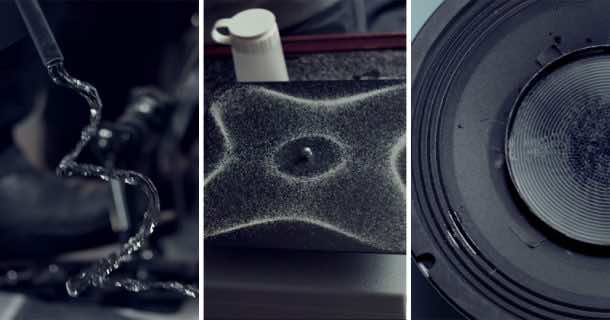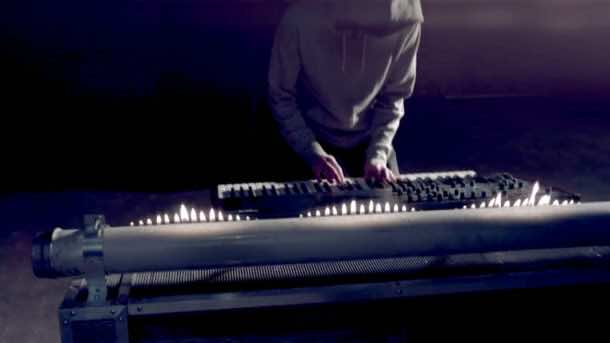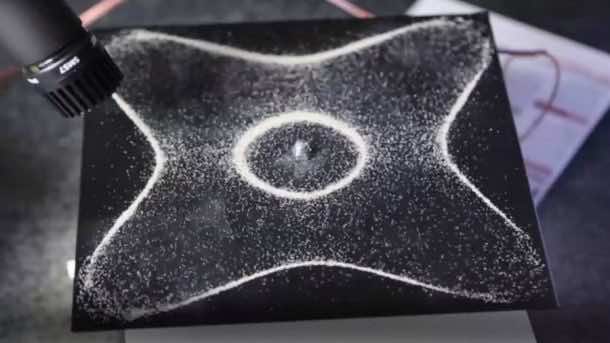When you put on your earphones and connect it to the music, you disconnect yourself from the world. Whether you are listening to Metallica or Instrumental, you can only hear the beats of the music. Imagine how remarkable it would be if you could both hear and see the music? Do you remember that viral video of a hooded guy playing different musical instruments who featured a hose pipe and Tesla Coil among various other things? This amalgamation of science and music is called Cymatics or visualization of audio frequencies.
The music was written by Nigel Stanford (the man in the video) who discussed a mental affliction called Synaesthesia,
“where people can see audio and I think I have a form of that, I see bass frequencies as red and high-end sounds as yellow and white. For me, sound and visuals are intertwined, they are one and the same thing” says Stanford.

The song ‘Cymatics’ blew the minds of millions of people around the world. Stanford, who tries “to do projects that are like mini-movies,” created a film based on scientific experiments, where each sound would be visualized through incredible yet physical special effects. Deep bass frequencies sent shockwaves through liquids, synth stabs ignited the columns of flame, and an electrifying crescendo of sound was made into literal electricity through a Tesla coil that was firing bolts of lightning over Stanford’s own mesh-clad body. Remarkably, the song itself was born out of the video. Each filmed motion was created by those frequencies that were successfully able to affect the particular physical objects.


Where ‘Cymatics’ showed the interface of science and music, Nigel Stanford’s next audio-visual opus, ‘Automatica’ explores an even bigger topic, the singularity or the point where artificial intelligence creates the next level of intelligence. The key concepts involve machine learning, robotics, and artificial intelligence. Mechanical evolution is visualized as a room of industrial robots that typically assemble cars in factories who will start picking up instruments to play. Beyond composing the music and starring in the ‘Automatica’ video, Stanford has spent long hours building both the physical sets and coding the digital realm of the video with his team. Stanford explains that each scene took hours of programming with not only the motions of the robotic band members but also the robotically controlled cameras and lighting set-ups, all requiring seamless rhythmic synchronization.
“For me, I just want to make something that is up there with the best of the best. I want to make the best thing that I possibly can.” says Nigel Stanford.
Video teaser of his project Automatica is as follows.


